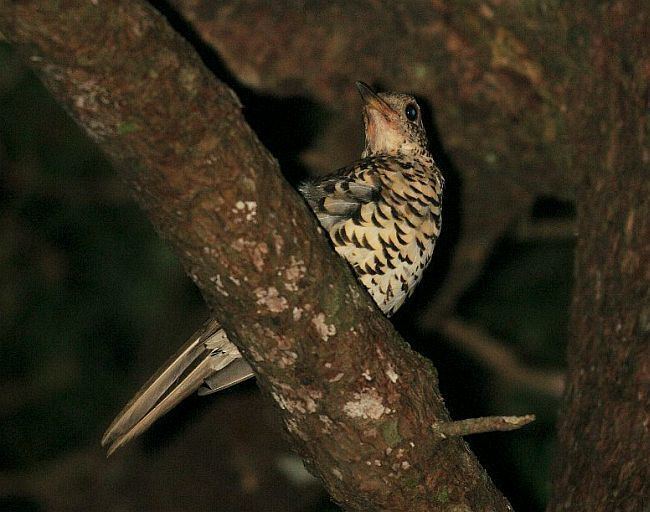Order Passeriformes Genus Zoothera Higher classification Zoothera | Phylum Chordata Family Turdidae Scientific name Zoothera major Rank Species | |
 | ||
Similar Amami woodcock, Scaly thrush, Lidth's jay, Ryukyu robin, Asian thrush | ||
140122 amami thrush
The Amami thrush (Zoothera dauma major) is a member of the thrush family Turdidae. It is endemic to the islands of Amami Ōshima and Kakeroma island in the northern Nansei Islands of Japan.
Contents
This large, heavily patterned thrush is similar in appearance to the scaly thrush, to which it is usually considered a subspecies. It has warm olive-brown to buff upperparts and whitish underparts with heavy black scaling. It has twelve tail feathers. The scaly thrush is smaller and has fourteen tail feathers. It has a cheerful song similar to the Siberian thrush. Among thrushes, only the blue whistling thrush typically attains a larger size. The Amami thrush ranges in length from 29 to 31 cm (11 to 12 in) and weighs approximately 172 g (6.1 oz). Among standard measurements, the wing chord is 16.4 to 17.3 cm (6.5 to 6.8 in), the bill is 3.1 to 3.3 cm (1.2 to 1.3 in) and the tarsus is 4.1 to 4.5 cm (1.6 to 1.8 in).
Its breeding habitat is mature subtropical broadleaved evergreen forest around humid valleys. Its diet includes invertebrates and fruit. It breeds in May and June, laying 3-4 eggs.
This bird is critically endangered due to forest clearance. The current population is estimated at less than sixty. Areas of forest have been protected by the government primarily for the conservation of this species and the Lidth's jay.
The breeding population is estimated by Amami Ornithologists' Club (NPO, Japan) all over the island every late March since 1999. The total number of singing birds, which may be territory holders, counted were more than 162 in 2006.
2 amami thrush wild bird
Taxonomic note
Since 2006 this taxon is no longer recognised by BirdLife International. It has been lumped into Zoothera dauma following Collar (2004). As a subspecies its conservation status is no longer classified.
